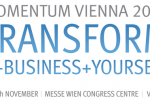The xCelerated Composition Platform version 2 is nearly a new development. There are so many changes between the first and the second version. Some features are not compatible to the old version. The following table displays the major changes including a small description.
| xCP 1.x | xCP 2.0 |
|---|---|
| Structured Data Types | * Business Objects replaced SDT * BO are flexible, have relationships, events and are persist after the process completes |
| Types-bayed Objects | TBOs will still supported but unnecessary |
| User Interface | * old WDK will be unsupported * new ExtJS interface * RESTful Service interaction * Browser independent, becasue GUI based on HTML 5 (best performance with google Chrome) |
| Forms Adaptors | * Adaptors from the FormsBuilder are not longer supported * Data Services will be used they are more flexible (realtime, historical/ external) Queries |
| Taskspace | * Taskspace not longer GUI of xCP * Native xCP viewer * Zero footprint technology on all Browsers and Devices |
| * Big Data Services with Greenplum * Syncplicity (data synchronization between many devices and the repository with permission sets for each object) * easy connection to additional EMC Products (Captiva 7, xPression , etc) |
|
| Process Debugger | The ProcessBuilder Debugger the will not be included in the 2.0 release. Dan said on the Momentum this year that the Debugger must be completely rewritten and this will take some time. But the deployment on the test environment is very fast and should not be a big obstacle. |
 |
 |






